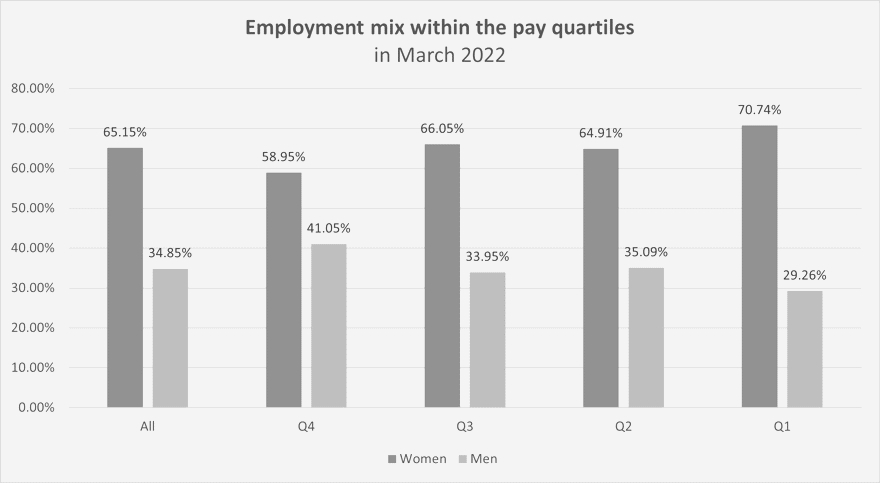Gender Pay Gap Report 2022
Under the Equality Act 2010 (Specific Duties and Public Authorities) Regulations 2017, all public authorities in England with 250 or more employees are required to report their gender pay gap data annually.
The Gender Pay Gap data provides the difference between the average earnings of men and women across an organisation, expressed as a percentage of men’s earnings. The use of Gender Pay Gap data can help to identify the extent to which men and women undertake different types of roles, at different levels within the organisation, which can also create differences in pay. It is different to equal pay data which considers rates of pay for the same level of work.
The University’s long-term commitment to equality and inclusivity is reflected in our Gender Pay Gap data. Over recent years, we have reported one of the lowest Gender Pay Gaps in the Higher Education Sector. This year, the median pay gap is 0%, when student employees are removed from the Gender Pay Gap calculation (students have the opportunity to undertake work at the University through our ‘earn as you learn’ scheme which has been very successful in preparing students for employment after completing their studies).
The data provided below relates to University of Worcester’s Gender Pay Gap report for 2022 taken on the snapshot date of 31 March 2022.
Employment mix within the pay quartiles

The quartile data (the split of employees into four groups by hourly rate, to show the balance of men and women in each group), shows that women are in the majority across all four quartiles. This data is indicative of the University’s inclusive approach in all areas of work and the value it places on female employees at all levels.
This year’s report showed a slight decrease in female employees in Quartile 4 (from 60.57% in 2021) which is due to some senior leadership posts held by women becoming vacant. These were filled after the census date for this report. There is an increase in female employees in Quartile 1 (from 67.52% in 2021), which is the impact of students choosing to undertake paid work within the University as ‘earn and you learn’ scheme. As 70% of our student population is female, it is inevitable that this gender split will have some impact on the overall data.
Mean Pay
The mean is calculated by adding all employees’ hourly rates of pay together and dividing by the total number of employees. The mean includes the lowest and highest rates of pay.
The average hourly rate paid to women at the University, when looking at hourly rates across all pay bands is 7.66% less than the hourly rate for men - this is the mean gender pay gap.
As mentioned above, the proportion of women in Quartile 1 increased between 2021 and 2022, due to the change in the gender balance in the students undertaking paid work, with more female students and fewer male students. This change has led to the small difference in the annual mean figures for 2021 and 2022.
Median Pay
The median is the measurement used to calculate the average pay, by finding the midpoint in all employees’ hourly rates of pay. Therefore, half of the employees will earn a rate above the midpoint and half will earn a rate below the midpoint.
The change in the gender balance in Quartiles 4 and 1 mentioned above has had an impact on the median gender pay gap and has increased the median for 2022 to 11.1%.
When student employees are removed from the calculation, the median pay gap is 0%.
Bonus Pay
There were no staff bonuses paid in 2021/22.
Future plans
The University is committed to inclusion and the promotion of gender equality. Our gender pay gap data confirms we have good foundations in place and that women are well represented at all levels within our organisation.
We continue to keep our HR policies and processes under regular review to ensure we are making steps towards removing any existing gender pay gap and to ensure that there is a balanced representation of different genders within the workforce and across all roles.
The balance within Quartile 1 is one area that has been identified as requiring further attention and consideration. The impact of senior leadership appointments in recent months will address the balance within Quartile 4.
We continue to monitor the employment ‘lifecycle’ of our staff; from initial recruitment ensuring that we have fair and consistent selection processes; having career development opportunities open for all job roles; clear and consistent promotion and salary processes; fair and flexible working practices.